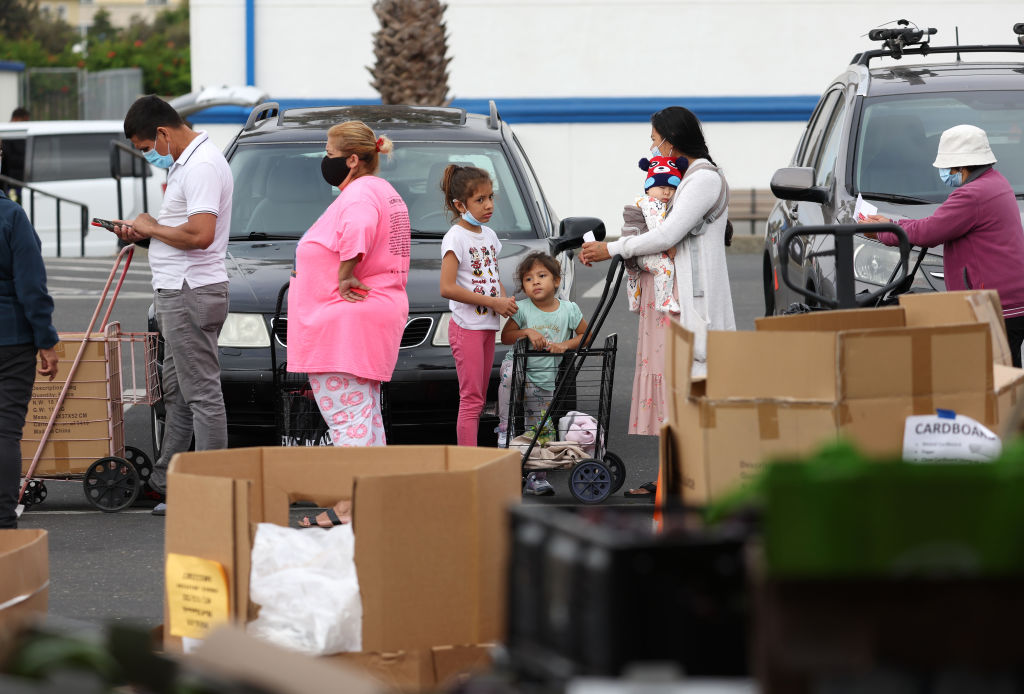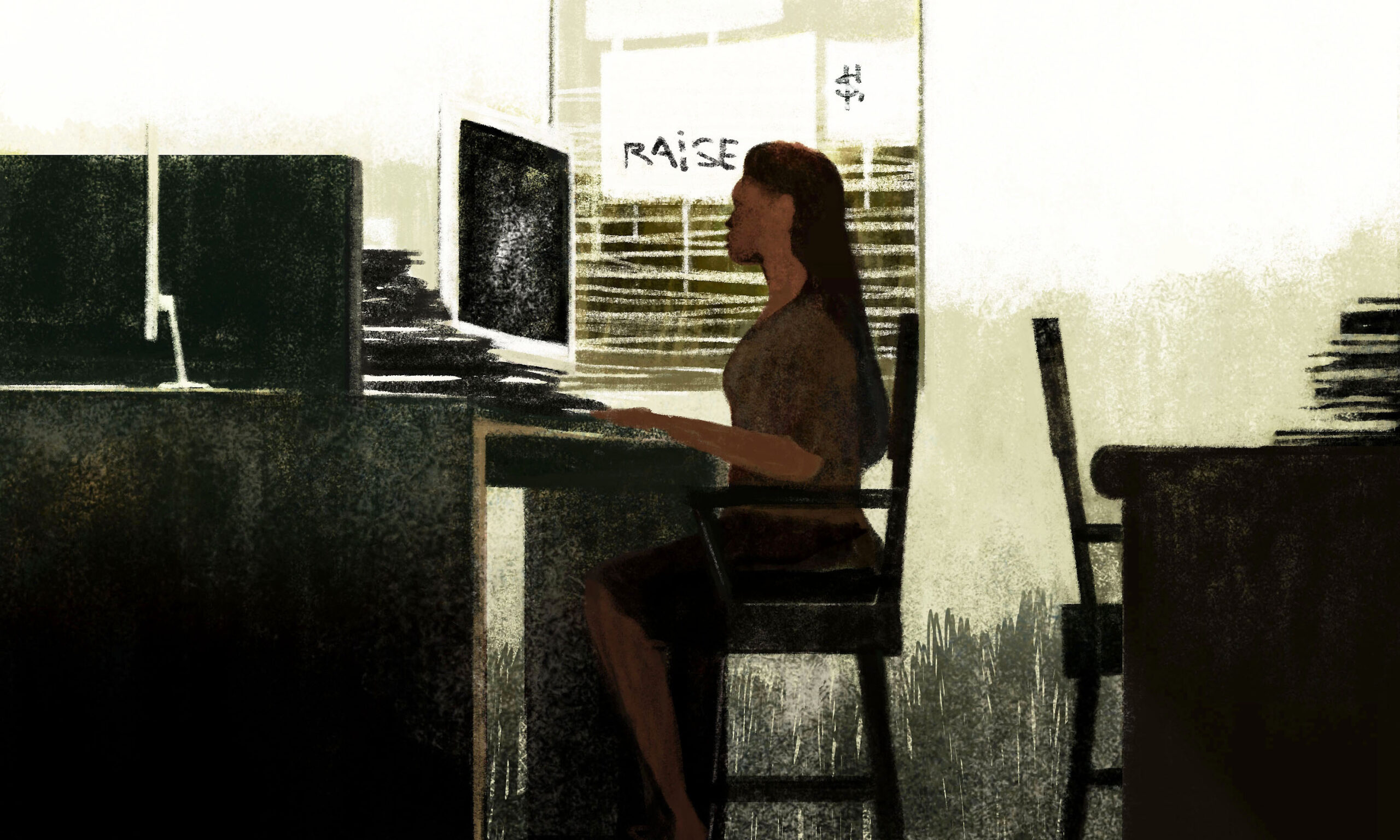SAN FRANCISCO: For two years, Virdell Hickman managed to avoid getting a raise. In the summer of 2020, the education nonprofit where she works launched a Diversity, Equity, and Inclusion initiative. Hickman, a Black woman, saw her salary bumped up. But she pleaded with her employers to not raise her pay.
What should have been a cause for celebration has instead become a headache. The higher salary, which in theory should be helping Hickman better navigate these inflationary times, will come with a major catch. It will mean she no longer qualifies for housing subsidies through the federal government’s Section 8 voucher program.
Last year, her employers told her they could no longer avoid giving her a raise. Succeeding at work could cost the Bay Area native her home and stable rent this April, when the government will review her eligibility for housing assistance.
“I got a raise and am so stressed out,” Hickman says. “I need a huge jump [to] over $100,000 a year to be able to make the rent on my own.”
Hickman’s resistance had created awkwardness with her Black co-workers at 826 Valencia, making it more difficult for them to present a unified front in demanding higher pay. Inside the institution, the pressure was on to get Hickman’s salary to match the median pay for her role as determined by an outside consultant. In July 2022, her salary was increased to $75,000 a year, pushing her past the $60,000 a year threshold beyond which she will no longer receive housing subsidies.
If she loses the voucher, the amount she pays for rent could more than double from $700 to $1500, even though her salary increased by a far smaller fraction.
Economists call Hickman’s dilemma the “benefits cliff”: get a new job or a promotion, and a rise in income beyond a certain threshold can disqualify people from benefits which they rely on to survive. Housing is only one worry: Food, cash assistance, and healthcare support are also based on income requirements.

The problem is especially acute in California. The Golden State experienced some of the highest inflation in the country over the past two years — and it was already one of the most expensive places to live in the United States before that. In major urban areas like San Francisco, the problem is compounded by high costs of living and fierce rental markets.
Wages don’t keep up with rising costs, so the threshold for losing financial assistance, linked to income levels, rises at a slower pace than the cost of living. Because of the instability of the economy, fluctuations in gas prices, and cost-of-living increases, many are unable to make accurate budget predictions that would enable them to confidently taper off their use of welfare programs.
The result is it’s easy for someone like Hickman to get bumped up to a salary range that’s high enough to disqualify her from government assistance, but too low to actually make ends meet.
Like Hickman, many who struggle with this Catch-22 situation are women of color. Welfare statistics do not break down how many recipients are women of color, but two out of three recipients of public assistance in the United States are women. Black and Hispanic women earn less than all other demographic groups, respectively earning $0.64 and $0.57 for every $1 earned by white men in 2020. This means they’re in disproportionately greater need for financial assistance, especially as they’re more likely than white women to be a single parent or primary income earner for their families.
The federal government’s Section 8 housing voucher program, created in the 1970s as part of an effort to reduce segregation by helping low-income families afford housing in more expensive neighborhoods, was intended to address disparities in costs of living by providing financial assistance based on an area’s median income.
In Hickman’s case, she qualifies for Section 8 vouchers as long as she makes less than roughly $60,000, half of San Francisco’s median household income of $119,136. Having crossed that threshold, she would have to pay full rent in a city where the fair market rate for a studio apartment is $2,069 a month, as assessed by the government.
It’s a strange moment for Hickman, who finds herself dreading departing a program that’s rarely seen as a desirable one. She recalls the stigma associated with Section 8 vouchers, with those who rely on them frequently being seen as people who have many children or who don’t take care of their homes. The stereotypes have long been debunked but their impact lingers.
“Now people don’t mind it because they know it’s guaranteed rent,” she says. “Before, it was discrimination left and right. As soon as you said Section 8, nobody wanted to rent to you. It was humiliating.”
“Threading the needle”
At 826 Valencia, Hickman is in charge of emergency plans and cost-effective approaches to the pandemic, including providing gloves, masks, and test kits for three learning centers. She paints on the side, and her larger-than-life, hyperrealistic painting, Beekeeper 3, hangs in a gallery a block from her non-profit, a pandemic-era piece inspired by beekeepers’ use of personal protective equipment.
She and a relative share a small studio space which her daughter helps pay for. If she loses this space because her rent at home goes up, she’ll have to start painting in her poorly ventilated one-window home.
“I work with oils and turpenoid. There’s a smell to that, which I love, but it’s not a healthy smell,” she says. “I’ll make the space for it. That’s how important it is to me.”
Local non-profits often find themselves walking a tightrope when it comes to figuring out pay for staff like Hickman.
“We often have to thread the needle with how much we pay residents in order to make sure they don’t lose benefits,” says Christy Shirilla, director of resident organizing at the Tenderloin Community Benefits District, a non-profit which works to improve neighborhood conditions in the Tenderloin area of San Francisco.
Her neighborhood activists work as block captains or help provide safe passage for the children who walk to and from after-school activities in the Tenderloin neighborhood. She says several of her clients, especially undocumented women, prefer a monthly Visa gift card to avoid inaccurate adjustments that may take months to process and result in penalties for one-off payments.
Soha Abdou, a residential services supervisor for an Arab families program at the Chinatown Community Development Center, a community organization in the Tenderloin, was once a recipient of food vouchers. She chose to get a promotion from the role of coordinator to supervisor and the raise that came with it, knowing it would mean losing the benefits. She says that while the financial assistance has stopped, the financial pressure she feels endures on a daily basis.
“I came here like many others, to work to build this country in a different way. But it’s not beautiful. It’s painful,” Abdou says. “I’m not talking about going to Disneyland. I’m talking about the basics, the cost of gas, of protein. Not even buying chicken or meat.”
The San Francisco Department on the Status of Women did not respond to requests for comments by phone or email at the time of publication.
Hickman says she has communicated her maximum allowable salary to her employer in order to stay below the threshold, but remains uncertain about the outcome of her upcoming annual Section 8 review.
“If you really want people to transition off of assistance, they have to till that cliff, not just drop them,” she says. “Once I hit that cliff, my whole life changes.”


 Bunny McFadden
Bunny McFadden
